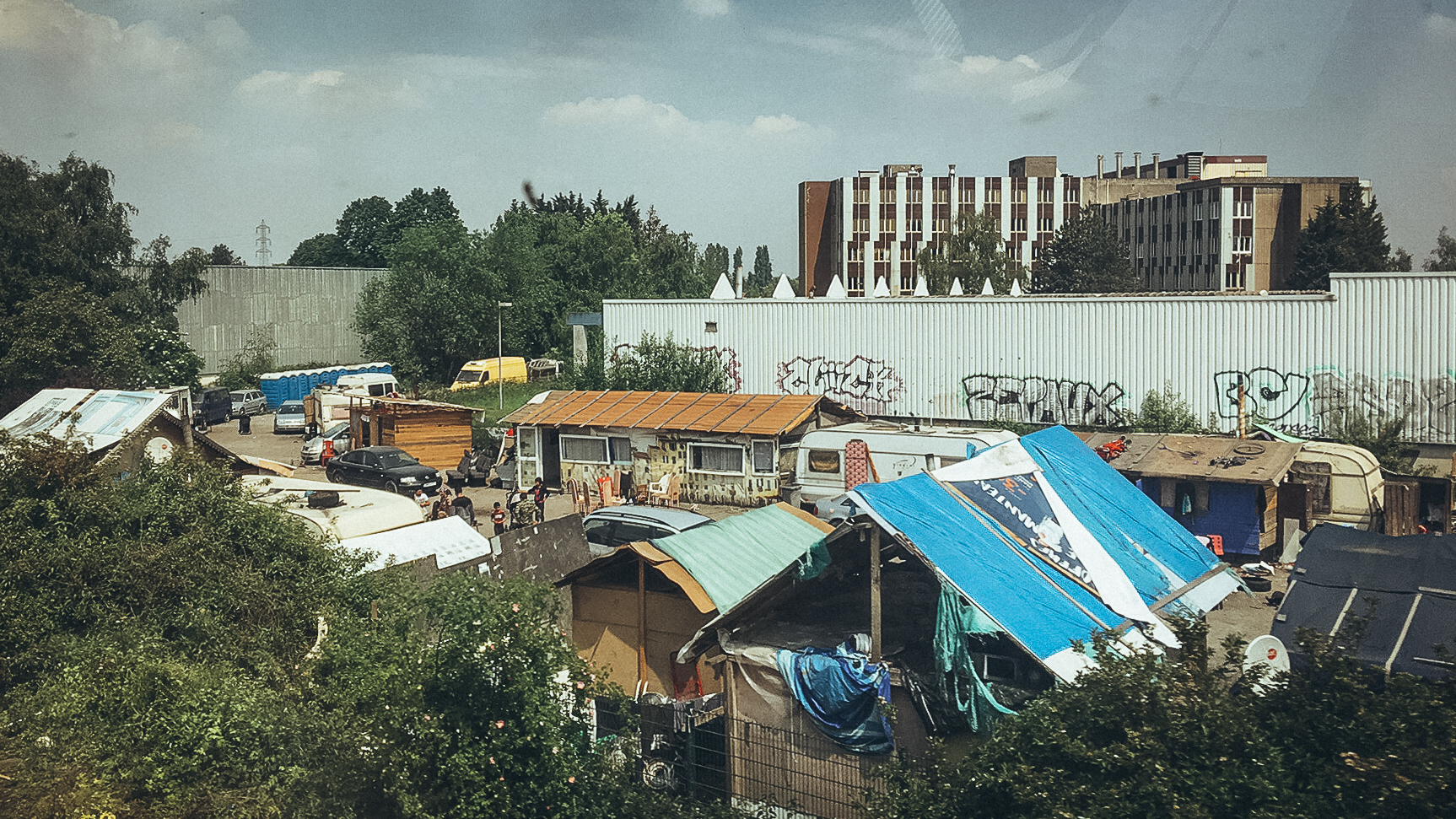Appearances can be deceiving…
My arrival at the seaside city of Calais is marked by a late-spring rainy weather, a not so unusual climate for the region. Grey clouds are my welcoming committee, accompanying me as I cross the city on a walk from the railway station to my hotel, where I will be spending my first days, until my companions arrive. The dull grey ambience is somehow covering the whole town, creating a cover of superficial conformity, as if someone were trying to polish any distinctly differing elements off and reassure me that everything here is ‘normal’, in order. Yet, it is hardly the case. Underneath this veil of normality, the town is hiding its past of agony and a boiling present. Calais has always been known as the connecting point between France and the United Kingdom. But in the recent history, it has been mostly identified throughout the world as a place of great concentration of refugees. The area known as the “Jungle of Calais” has been shut down since October 2016, when bulldozers entered the camp and started dispersing its residents across the country.

Nevertheless, more than three years later, contrary to the appearances, the issue still remains unresolved. Even worse, there is a new reality still making the headlines on national and international press. Since the demolition of the “Jungle”, makeshift camps are appearing in random spaces, only to be met with the brutality of the local police forces, driving away the people in need. By destroying their made-up shelters and seizing their possessions, no matter the season, harassment against migrants and aid-workers alike, is ever-present in Calais. The greatest irony of it all, is that the very same area that hosted the “Jungle” is now listed by the city authorities as a natural reserve, a protected environment for migrating birds. Thinking about that, another bird comes to my mind, the ostrich; and the myth that wants the bird to bury its head in the sand when feeling threatened, as if a threat would vanish, if we ‘d just pretend it does not exist…
If you destroy a bridge, be sure you can swim… (Swahili proverb)
After a long day and half, a time mostly spent inside my room due to the unwelcoming weather, I am moving to the guest house of Le Channel along with my colleagues, Pietro, Sarah and Davide from Cantieri Meticci and Edouard, Erato and Aliki from our Motus Terrae team. It is my first time visiting Le Channel and here I am, amazed by the size, beauty and energy of the place… I still carry this first impression dearly and whatever experience I have lived during our stay there, has only augmented this first feeling of appreciation. In the beginning, Le Channel seemed to me like an island. A small piece of welcoming land in the middle of a menacing ocean, where culture, companionship and solidarity were considered as common elements as water and food. Maybe it was just my romantic side longing for a cultural oasis in this unfamiliar city. After a couple of days living in and with Le Channel, I start seeing things a bit differently and this is when the meaning of the place’s actual name struck me. Le Channel is not an island as I originally thought. In reality, is indeed a channel, or even better a bridge. It feels like its purpose is to connect, not land but people, by filling the space in between. Does it serve this purpose? Yes. Does it do it successfully? I could not yet tell… Because, sometimes it gives the impression of the edges of that bridge not being quite open. Both sides are barricaded. For its own protection? I wouldn’t know… But somehow, it feels that a large part of the local community has a difficulty connecting with what Le Channel is proposing to them. Whose fault is it? Is it the people’s or the venue’s…? How can we bring together what the people want and what we want…? And ultimately, aren’t we people as well?
For instance, what I want is sun. Je veux du soleil, like the song my new friends were singing at Max’s birthday. Max is part of the technical team at Le Channel. One of the afternoons, Momette, Caroline, Micha, along with Emilie, manage to stop me from working and take me out of my golden cage for a walk at the port… Calais is a strange place, with one of most incoherent architectural styles I ‘ve ever seen in a city… I learn that during the second world war, almost 80% of the city was destroyed. The fact that the reconstructions had to accommodate a variety of factors simultaneously (the need of housing, a future urban planning, the preservation of cultural heritage) resulted to this not so homogenous, yet not unattractive landscape. We walk the port. The sun is setting and the tide is low. They are taking me to the ‘best bar in town’ as I am told and I must agree with them… A small place by the sea, where all clientele act as if they ‘d known each other since forever (and they most probably do). I blend in and we end up joining Max’s birthday celebration. Before I leave Calais I will understand how close Le Channel’s team is and how much they enjoy working together at this specific place. They are happy and they made us all happy as well. During our extra-compressed creation period with Cantieri Meticci, the whole team stood by our side, providing us with materials, help, solutions and smiles.
Continue to page 2/4



